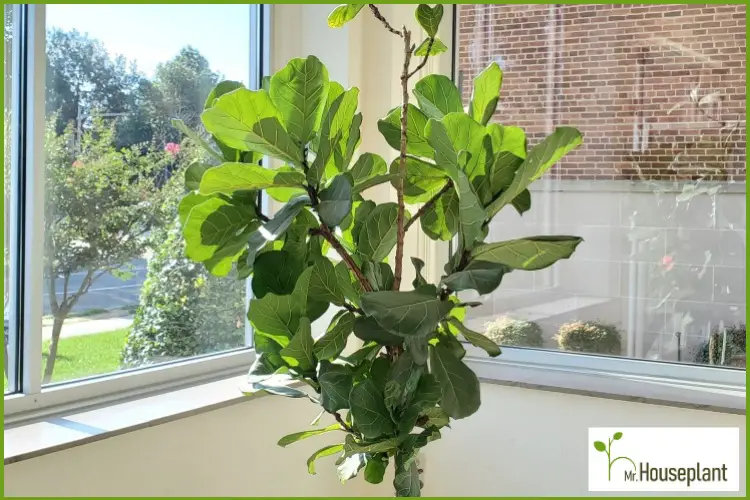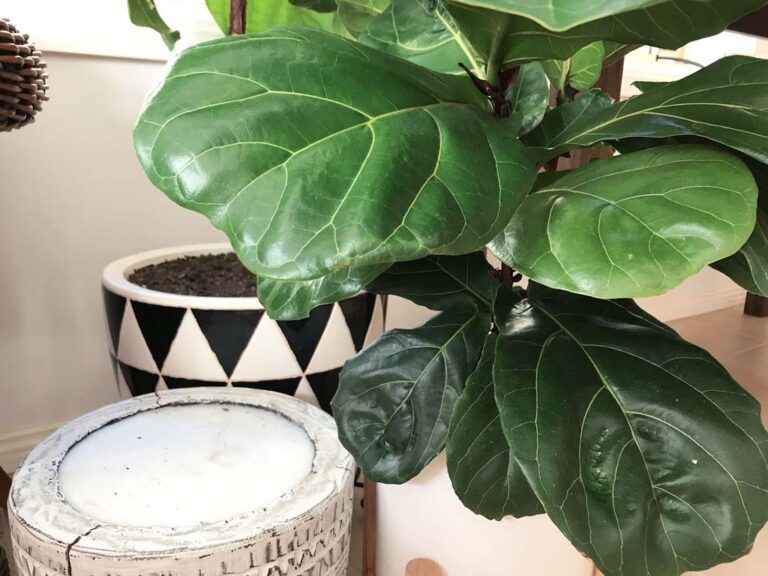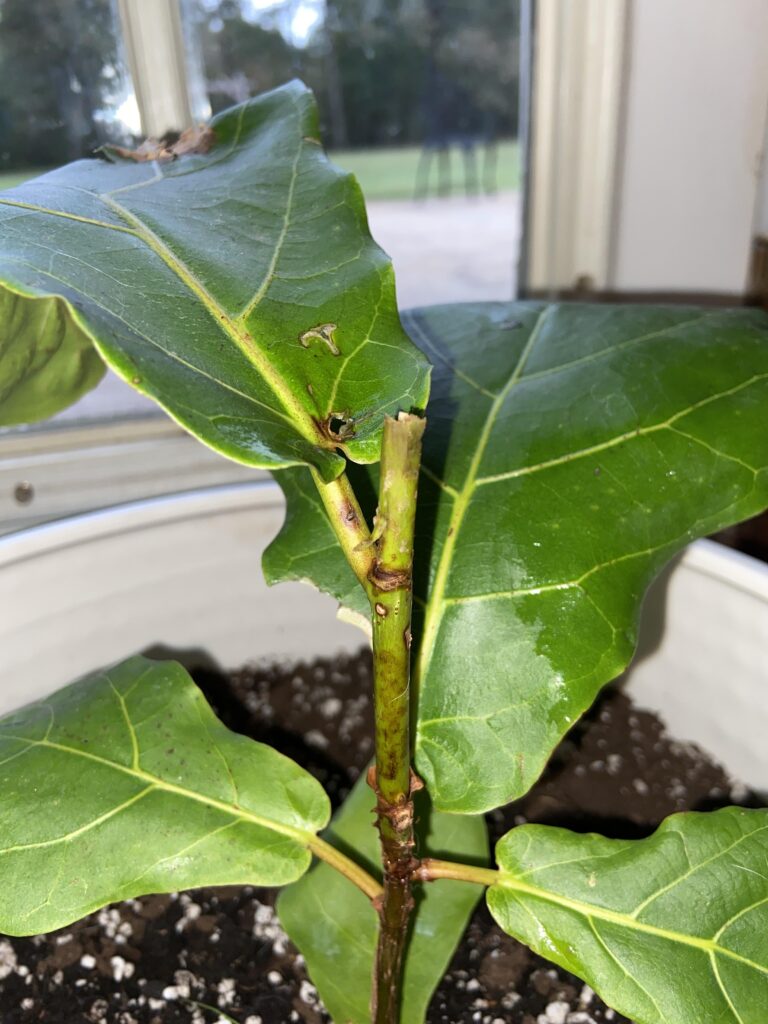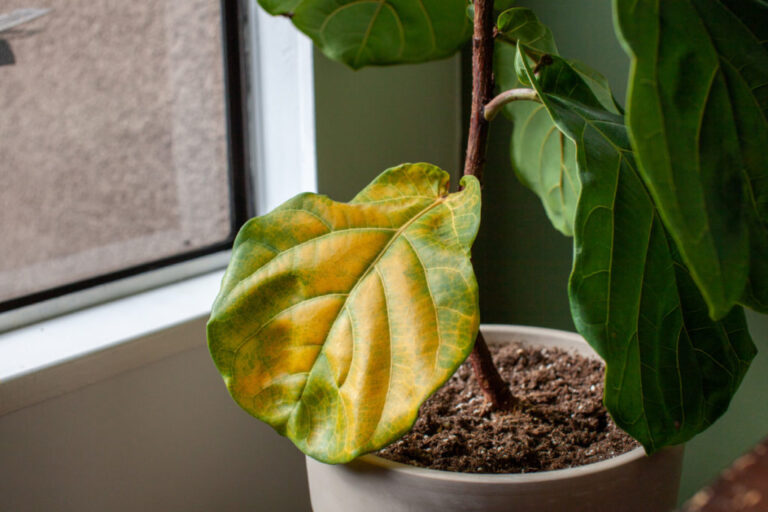Maximizing Light for Fiddle Leaf Fig
Importance of Proper Lighting
Fiddle leaf fig plants thrive in environments where they can absorb plenty of natural light. This is essential for the photosynthesis process, which provides the energy required for their growth and maintenance. Insufficient light can lead to yellowing leaves, brown spots, and ultimately leaf drop (Fiddle Leaf Fig Plant). Ensuring that your fiddle leaf fig receives the optimal amount of light will foster healthy growth and prevent common issues.
Natural vs Artificial Light
Natural Light
The best placement for a fiddle leaf fig plant is in front of a large window. Specifically, a south-facing window is ideal, as it provides steady sunlight throughout the day. A floor-to-ceiling window with an overhang outside is perfect to prevent direct sunlight from scorching the leaves (Fiddle Leaf Fig Plant).
| Light Source | Ideal Placement | Duration |
|---|---|---|
| Natural Sunlight | South-facing window | All day |
Artificial Light
During the winter months, when natural light is scarce due to shorter days, supplementing with artificial lights becomes necessary. LED grow lights are particularly effective, as they replicate the sun’s spectrum (Gregarious). The lights should be set up to shine for about 8-12 hours a day and positioned 12 to 18 inches above the fiddle leaf fig for optimal light distribution (Fiddle Leaf Fig Care).
| Light Source | Duration | Placement |
|---|---|---|
| LED Grow Lights | 8-12 hours/day | 12-18 inches above plant |
In summary, combining natural and artificial light sources ensures that your fiddle leaf fig plant receives the necessary light regardless of seasonal changes. This approach helps avoid light-related issues, promoting vigorous and healthy growth. For further details on managing light for fiddle leaf figs, check out our guides on fiddle leaf fig tree care and fiddle leaf fig plant not growing.
Ideal Light Conditions
Best Placement for Sunlight
Fiddle Leaf Fig plants thrive in bright, indirect sunlight. The optimal placement for a fiddle leaf fig plant is in front of a large floor-to-ceiling window with an overhang to shield it from direct sunlight. A south-facing window is ideal as it offers consistent sunlight throughout the day.
Here are some key points for the best placement:
- Large Window: Ensure the plant is near a large window to receive ample light. A distance of 1-2 feet from the window is generally suitable.
- South-facing: Positioning the plant near a south-facing window can provide maximum exposure to natural light.
- Overhang: An overhang or sheer curtain can help diffuse the light, preventing direct sun exposure that can scorch the leaves.
- Reflective Surfaces: Using light-colored walls or mirrors near the plant can help bounce light around the room, increasing the overall brightness (Gregarious).
Consider this table for ideal placement metrics:
| Placement Aspect | Measure |
|---|---|
| Distance from Window | 1-2 feet |
| Window Orientation | South-facing |
| Use of Reflective Surfaces | Light-colored walls/mirrors |
Avoiding Direct Sun Exposure
Direct sunlight can be harmful to fiddle leaf fig plants, causing leaf burn and damage. The harsh afternoon sun, in particular, can stress the plant. It’s essential to find a balance to ensure the plant receives enough light without being exposed to direct, intense sunlight.
Here are some tips:
- Morning Sun: Allow the plant to receive gentle morning sunlight, which is less intense and more nurturing for the plant (Gregarious).
- Afternoon Shade: Protect the plant from the harsh afternoon sun by providing shade using blinds, curtains, or select placement.
- Diffused Light: Utilize sheer curtains or frosted window films to diffuse the sunlight, ensuring the plant gets bright light without direct exposure.
- Monitoring: Regularly check the plant for signs of light stress. Symptoms of excessive light include yellowing or browning leaves. Visit fiddle leaf fig tree brown edges for more details.
Adequate light conditions are critical for the health and growth of your fiddle leaf fig. For more comprehensive care advice, visit our extensive guides on fiddle leaf fig tree care and fiddle leaf fig tree watering.
Recognizing Light-related Issues
Proper lighting is crucial for the health of a fiddle leaf fig plant. Insufficient or excessive light can lead to various problems. Recognizing these issues early can help gardeners address them promptly and maintain a healthy plant.
Symptoms of Insufficient Light
Fiddle leaf fig plants need plenty of sunlight to thrive. Lack of sunlight can lead to several issues (Fiddle Leaf Fig Plant). Here are some common symptoms of insufficient light:
- Yellowing of Leaves: Leaves may start to turn yellow due to inadequate light, as the plant struggles to perform photosynthesis effectively.
- Brown Spots: Brown spots can develop on the leaves, indicating stress from low light conditions.
- Leaf Drop: The plant may start dropping its leaves as it cannot sustain them without adequate light.
- Stunted Growth: Lack of sufficient light can also lead to slow or stunted growth.
Common symptoms of insufficient light:
| Symptom | Description |
|---|---|
| Yellowing Leaves | Leaves turning yellow due to low light |
| Brown Spots | Stress marks on leaves |
| Leaf Drop | Leaves falling off the plant |
| Stunted Growth | Slow or halted growth |
More information on this topic can be found in our article on fiddle leaf fig problems.
Signs of Excessive Light
While insufficient light can cause problems, too much light can be equally damaging to a fiddle leaf fig plant. Recognizing the signs of excessive light exposure is essential for proper plant care.
- Leaf Burn: Direct, harsh sunlight can cause leaf burn, leading to crispy, brown edges on the leaves.
- Discoloration: Excessive light can cause the leaves to become pale or bleached as chlorophyll breaks down.
- Wilting: The plant may appear wilted and dehydrated even when adequately watered.
Common signs of excessive light:
| Sign | Description |
|---|---|
| Leaf Burn | Brown, crispy edges on leaves due to harsh sunlight |
| Discoloration | Pale or bleached leaves indicating breakdown of chlorophyll |
| Wilting | Wilting appearance despite adequate watering |
If you notice any of these signs, it’s essential to adjust the lighting conditions for your fiddle leaf fig. For more details, visit our guide on fiddle leaf fig tree care.
Recognizing and addressing light-related issues can help ensure your fiddle leaf fig plant remains healthy and vibrant. For more information on maintaining optimal growing conditions, check out our articles on fiddle leaf fig growth rate and fiddle leaf fig plant not growing.
Light Management Tips
Effective light management is crucial for the well-being of your fiddle leaf fig plant. This section provides practical tips on adjusting light conditions during seasonal changes and using grow lights as supplements.
Adjusting for Seasonal Changes
Fiddle leaf fig plants require approximately 12 to 14 hours of light per day and 10 to 12 hours of darkness to maintain a consistent light-dark cycle for their biological rhythm (Fiddle Leaf Fig Care). During different seasons, the availability and intensity of natural light can vary significantly, affecting the light your plant receives.
Summer:
- Ensure your plant gets indirect sunlight. Place it near east-facing or south-facing windows for balanced exposure.
Winter:
- Utilize artificial lights to compensate for shorter days. LED or fluorescent lights are recommended. They should mimic the sun’s spectrum and be set to shine for about 8-12 hours daily, aiming for a light intensity similar to natural sunlight (Gregarious).
| Season | Light Source | Duration | Placement |
|---|---|---|---|
| Summer | Natural Sunlight | 12-14 hours | East or South-facing windows |
| Winter | Artificial Lights (LED/Fluorescent) | 8-12 hours | 12-18 inches above the plant |
For more tips related to seasonal adjustments, you can refer to our fiddle leaf fig tree care.
Using Grow Lights as Supplements
When natural light is inadequate, grow lights can provide the necessary illumination to keep your fiddle leaf fig healthy. Here are the essentials for using grow lights effectively:
Choosing the Right Grow Light:
- LED bulbs are ideal. They are efficient, produce minimal heat, and are long-lasting, making them an excellent choice for indoor plants.
Light Intensity Needs:
- Medium to high-light houseplants like fiddle leaf figs require between 250 to more than 1,000 lumens per square foot to thrive (Eartheasy).
Optimal Placement:
- Place LED grow lights 12 to 18 inches above your fiddle leaf fig for optimal light distribution and to prevent heat stress (Fiddle Leaf Fig Care).
| Aspect | Recommendation |
|---|---|
| Light Type | LED |
| Lumens | 250-1,000+ per sq ft |
| Placement | 12-18 inches above the plant |
| Duration | 8-12 hours daily |
Using grow lights can help manage light exposure effectively, leading to healthier growth and vibrant foliage. For additional advice on fiddle leaf fig plant light and related issues, explore our related articles on fiddle leaf fig tree problems and fiddle leaf fig plant dying.




